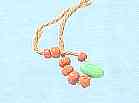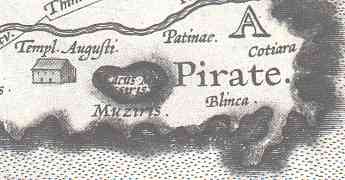The Bead SiteHome>Ancient Beads> Middle East > Indian Ocean Trade
|
|
Early Navigation and Trade in the Indian Ocean (Ravenna, Italy 4-7 July 2002)
Is.I.A.O. (Istituto Italiano per l'Africa e l'Oriente), UniversitÓ di Bologna - Sede di Ravenna
Dipartimento di Archeologia dell'UniversitÓ di Bologna and Fondazione Flaminia
|
Beads make ideal trade items because they are highly portable and treasured where they are imported. To our advantage, many are made of durable materials and last into the archaeological record. They are, for example, the oldest known form of art.
From the beginning, I will tell you what many of you already know. I am something of an evangelist for beads. I believe their scientific, humanistic study can teach us much about the past. In this short time, I want to show you some examples of that.
|
Indo-Pacific beads were not very numerous in those centuries, making up only about four percent of the beads excavated. However, after the hiatus of the third century, they become very important, making up some 40% of the beads on the site. They were not from Arikamedu.
We do not have them analyzed yet, but the colors make it quite clear that they were coming from Mantai, at the northern end of Sri Lanka.
|
|
||||||||||
The Sangam poets put Muziris on the Periyar River (see map). But "periyar" just means
"big river." There were several "Periyar Rivers" in Sangam times and the Periyar of today may well not be the Periyar of the past, especially along the shifting Malabar Coast
(Francis 2002: 119-120).
It seems likely that Muziris was a small fishing village with a temporarily good port down-stream from the Palghat Gap, one of the few places where one can cross the Western Ghat mountain range. Just over the gap is the lapidary-jewelry site of Kodumanal, very close to the source of beryl and other gems, as well as pepper and cardamom-growing regions. Arikamedu probably sent its gemstone and glass beads in this direction, as well
(Francis 2002: 121-122).
The Romans found it a good place to trade, but after the Romans left, it fell back to sleep. When the Romans returned a century later, there was not much there and they kept on going until the reached the bustling port of Mantai. As confirmation of this, Roman coins are very scarce in Sri Lanka until the fourth century, when they appear in large quantities
(Weerakkody 1997: 163-154).
The case of the mysterious Muziris is an example of what we can learn when
we incorporate bead evidence into our understanding of trading networks.
Many other things can be learned as well.
Part Two: Beads and the Demographics of Berenike
__________________________________________________
Small Bead Businesses | Beading & Beadwork | Ancient Beads | Trade Beads
Beadmaking & Materials | Bead Uses | Researching Beads | Beads and People
Center for Bead Research | Book Store | Free Store | Bead Bazaar
Shopping Mall | The Bead Auction | Galleries | People | Events
The Bead Site Home | Chat Line | Contact Us | Site Search Engine | FAQ








